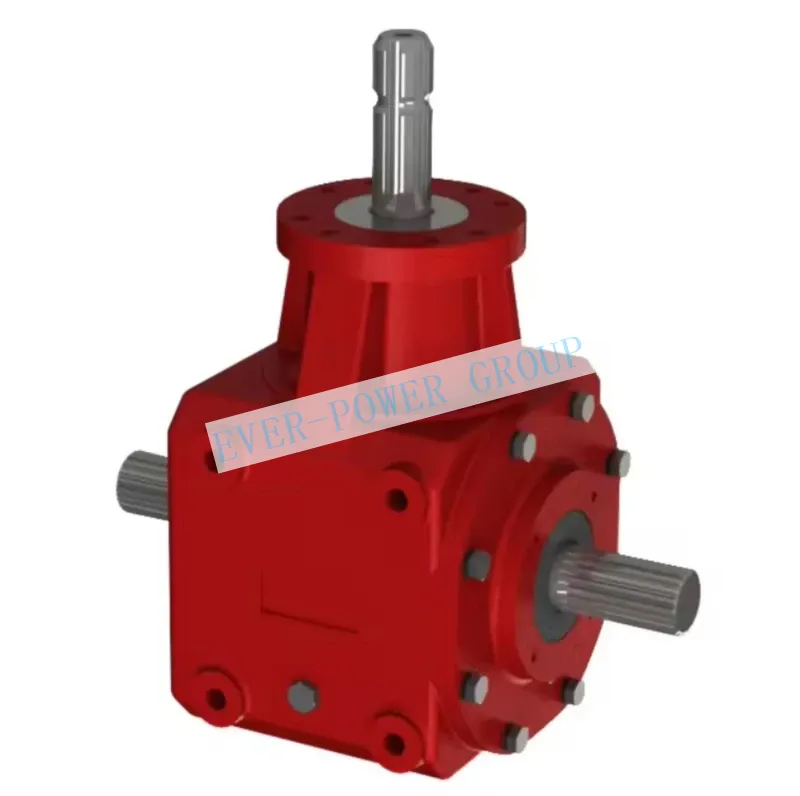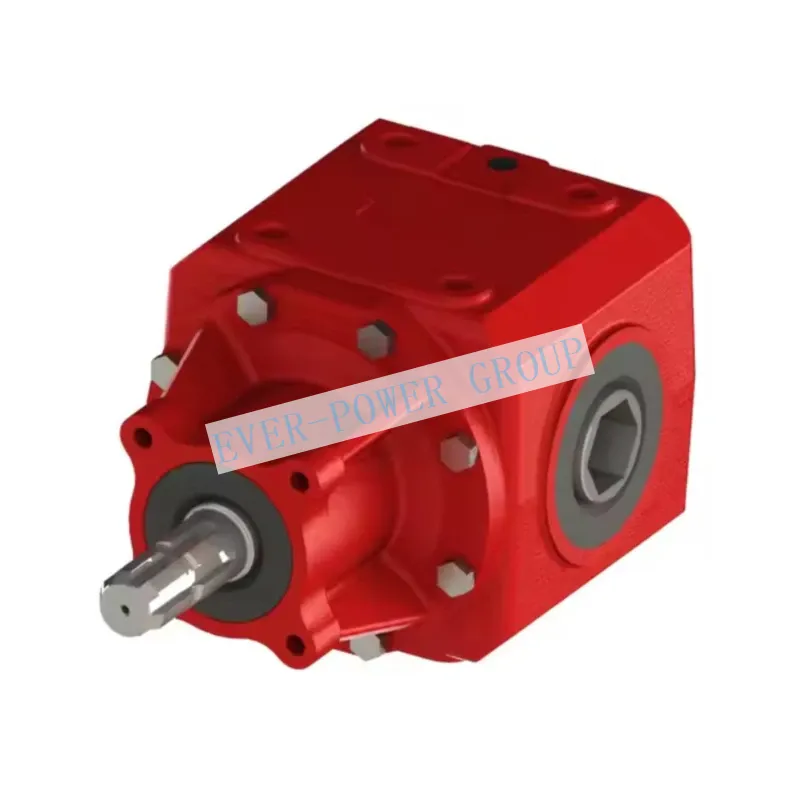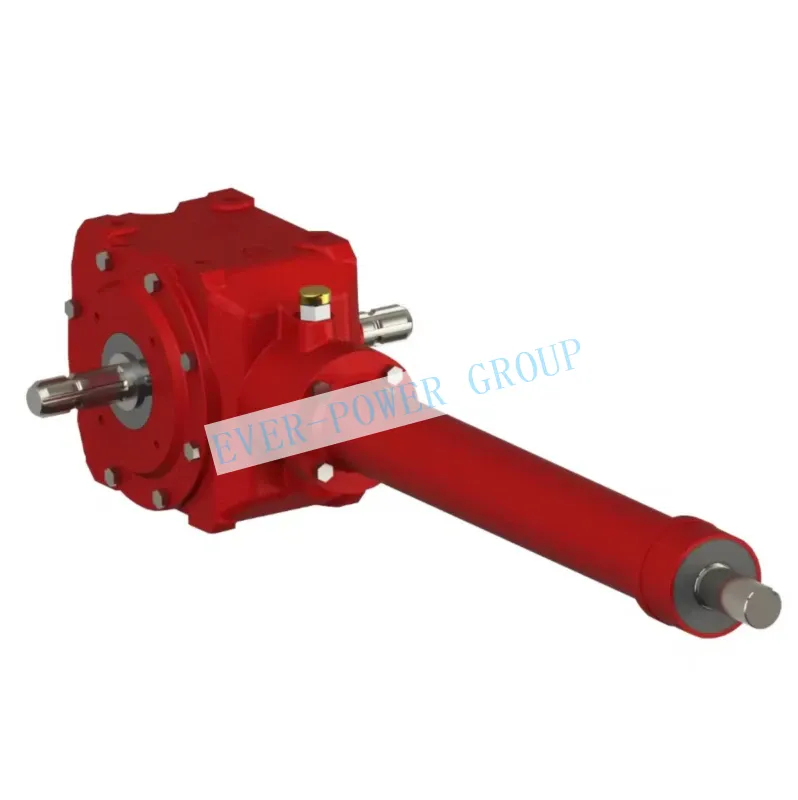Agricultural Gearboxes
HIGH QUALITY PRECISE MANUFACTURER &SUPPLIER

High quality professional production
Our company specializes in the production and sales of agricultural gearboxes, a crucial component in agricultural machinery. With years of experience in the industry, we have honed our skills in manufacturing gearboxes that are durable, efficient, and reliable. Our agricultural gearboxes are designed to withstand the rigorous demands of agricultural operations, ensuring smooth and dependable power transmission.
We pride ourselves on our commitment to quality and innovation. Our team of engineers continuously strives to improve our products, incorporating the latest technologies and materials to enhance performance and durability. As a result, our agricultural gearboxes are trusted by farmers and agricultural businesses worldwide.
Whether you need a gearbox for a tractor, harvester, or any other agricultural equipment, we have the perfect solution for you. Contact us today to learn more about our products and how we can help you improve your agricultural operations.
Agricultural gearbox for sale
-

Helical Worm Gear Speed Reducer Gear Box Shredders Bales Agriculture Tractor Gearbox
-

OEM Agricultural Gearbox 2 Speed Orchard Sprayer Machine GearBox with Neutral Gear
-

OEM Agricultural Gearbox 8 Output Shafts Helical Bevel Gears Hay Rakes Gearbox
-

OEM Agricultural Machinery Gearbox Reducer Increaser Rotary Tiller Shredder Gearboxes
-

OEM Agricultural Tractor PTO Gearbox Helical Gear Gearbox With Free Wheel For Tiller Shredder Bale Dryer
-

OEMPTO Gearbox Agriculture Helical Gear Gearbox For Multiple Rotary Tillers Bales Dryers
Advantages of agricultural gearboxes compared to other gearboxes
| Feature | Agricultural Gearboxes | Other Industrial Gearboxes |
|---|---|---|
| Durability | Designed to withstand harsh, variable outdoor conditions including exposure to dust, moisture, and extreme temperatures. | Typically designed for more controlled environment conditions; may not be as robust against environmental factors. |
| Torque and Power | Specifically engineered to handle high torque and power needed for plowing, harvesting, and other heavy-duty farming operations. | While powerful, they might not be optimized for the high-torque, low-speed requirements typical in agriculture. |
| Maintenance | Often designed for easy maintenance and repair in the field to minimize downtime during critical farming periods. | Maintenance can be complex and might require specialized service, which is not ideal for remote or rural settings. |
| Customization | Highly customizable to match a wide range of agricultural machinery and specific farming needs. | Generally standardized to specific industrial applications; less flexibility in customization. |
| Material and Construction | Built with materials and sealing solutions that are resistant to corrosion and other damage from agricultural chemicals and animal waste. | Materials used may not be as resistant to corrosive substances unless specifically designed for such conditions. |
| Versatility | Capable of operating in a range of machinery and for various functions — from soil cultivation to crop processing. | Often designed for a specific function within a production line or manufacturing process. |
| Cost-Efficiency | Designed for energy efficiency in prolonged operations to reduce operating costs, essential in the cost-sensitive agricultural sector. | Energy efficiency may not be prioritized depending on the industrial application. |
| Environmental Resistance | Engineered to be more resistant to the elements, which is crucial for equipment frequently exposed to the outdoors. | May lack the necessary protections against environmental degradation without additional customization. |
| Load Handling | Able to handle variable loads effectively, essential for the fluctuating demands of agricultural tasks. | May not offer the same level of load adaptability, typically optimized for consistent load applications. |
| Safety Features | Incorporates safety features suitable for a range of users, including less experienced operators common in family-run farms. | Safety features might be designed for experienced industrial operators under more controlled conditions. |
Application of agricultural gearboxes in agricultural production

Harvester
Harvester is used to harvest cereals, corn, cotton and other crops. Gearboxes ensure efficient and stable power transmission in these machines, allowing blades and other components to run at the appropriate speed.

Balers
Balers are used to compress and bundle straw, hay or other materials after harvest. The gearbox plays an important role here, controlling the movement of the compression machinery.

Sprayers
Sprayers used to spray pesticides or fertilizers rely on gearboxes to drive pumps and fans to ensure even distribution of the agent.
What types of agricultural gearboxes are there?
1. Parallel shaft gearbox: This kind of gearbox usually has parallel input and output shafts, and changes the transmission ratio through gear pairs with different numbers of teeth. It has a compact structure and is suitable for the power transmission needs of various agricultural machinery.
2. Planetary gearbox: Planetary gearboxes are known for their high transmission ratios and torque output capabilities. It uses a structure in which multiple planetary wheels rotate around a central sun wheel, which can effectively transmit high power and is suitable for heavy-duty agricultural machinery and equipment.
3. Right-angle gearbox: The right-angle gearbox can achieve 90-degree transmission between the input shaft and the output shaft, which facilitates power transmission in a limited space. This type of gearbox is widely used in the steering and transmission systems of agricultural machinery.
Main components of agricultural gearboxes
1. Gear: Gear is the core component of an agricultural gearbox, used to transmit power and adjust speed. Gears mesh in a specific way to ensure a smooth transfer of power from the input shaft to the output shaft. The materials and design of gears are carefully selected to withstand the high loads and harsh environments found in agricultural operations.
2. Shaft: The shaft is a critical component that supports and secures the gear. In agricultural gearboxes, shafts transmit power and connect the individual gears to ensure they rotate at the correct speed and direction.
3. Bearings: Bearings support the rotation of shafts and gears, reducing friction and wear. They are usually made of wear-resistant materials and can withstand high loads and long periods of operation.
4. Box: The box is the outer shell of the agricultural gearbox and is used to accommodate and protect the internal gears, shafts, and bearings. The cabinet is usually made of sturdy materials that withstand external shock and vibration.
5. Seals and lubrication systems: Lubricating oil is required inside agricultural gearboxes to reduce friction and wear and increase the service life of gears and bearings. The seals ensure that the lubricating oil does not leak while the lubrication system circulates and cools the oil to maintain good lubrication inside the gearbox.
6. Accessories and connections: This includes bolts, nuts, washers, etc., used to fix and connect various gearbox components to ensure the stability and reliability of the entire system.
These components are common
Choosing the right agricultural gearbox
Choosing the right agricultural gearbox is crucial to ensure the regular operation of farm machinery and improve production efficiency. Here are some critical steps and considerations to help you make an informed choice:
First, you need to determine the workload and transmission requirements of the gearbox. Different agricultural machinery and operating scenarios have different requirements for the gearbox’s load capacity and transmission ratio. Therefore, when selecting a gearbox, consider its rated load, maximum torque, and required transmission ratio range to ensure that the gearbox can meet the needs of the actual work.
Secondly, it is also essential to understand the gearbox’s performance parameters and technical indicators. For example, you should pay attention to the transmission efficiency, noise level, temperature rise, and gearbox reliability. Efficient transmission can reduce energy loss and improve overall efficiency; low noise and excellent heat dissipation performance can ensure that the gearbox remains stable during long-term operation, and high reliability means fewer failures and longer service life.
In addition, the gearbox’s structure and material are also factors that need to be considered in the selection process. The sturdy and durable structure and high-quality materials ensure the gearbox’s stable operation in harsh agricultural environments. At the same time, you can also consider the gearbox’s lubrication system and sealing performance to ensure good lubrication and prevent leakage.
Finally, it is also essential to choose a reputable gearbox manufacturer. High-quality manufacturers usually have advanced technology, strict quality control, and a complete after-sales service system. They can provide you with reliable gearbox products and professional technical support.
Blog
FAQ
What are the problems and solutions that may be encountered during the use of agricultural gearboxes?
Agricultural gearboxes may encounter various problems during use, which may stem from improper operation, insufficient maintenance, environmental factors, or quality problems with the gearbox itself. Here are some common issues and their corresponding solutions:
Common problem:
1. Abnormal noise in the gearbox may be caused by gear tooth surface wear, collision, or improper assembly. Abnormal noise may appear steady or abnormal when rotating in a specific direction.
2. Oil temperature is too high: The oil temperature may be caused by cooling system failure or the oil pipe connection reverse, which will affect the regular operation and life of the gearbox.
3. Bearing temperature is too high: Bearing temperature is too high, usually related to the bearing’s clearance being too small, poor lubrication, or assembly problems.
4. Broken or glued gears: These may be caused by overload, impact, insufficient lubrication, or wear from prolonged use.
5. Seal failure and leakage: Aging, damage, or improper installation of seals may cause lubricant leakage and affect the gearbox’s normal operation.
Solution:
1. Abnormal noise problem: First, check the wear of gears and bearings and replace seriously worn parts in time. At the same time, ensure that the gearbox is assembled correctly to avoid bumps and improper assembly.
2. The oil temperature is too high: Check whether the cooling system works properly, including whether the cooler and oil pipe are connected reversely. Clean the radiator regularly to ensure good cooling.
3. The bearing temperature is too high: Adjust the bearing clearance to ensure it is within the appropriate range. Strengthen lubrication to ensure that the bearings are fully lubricated. For assembly issues, reinstallation and adjustments are required.
4. Gears are broken or glued: Broken gears must be replaced in time. Lubrication should be strengthened to avoid overload and impact for gluing problems. Check the gear worn regularly and deal with it in time.
5. Seal failure and leakage: Replace aging or damaged seals to ensure correct installation. Regularly check the gearbox’s sealing condition and deal with leakage problems in a timely manner.
What factors should be considered in the design of agricultural gearboxes?
The design of agricultural gearboxes is a complex and critical process that requires consideration of multiple factors to ensure performance, reliability, and durability. Here are some key factors that must be considered during the agricultural gearbox design process:
1. Functional requirements:
First, clarify the specific functions of gearboxes in agricultural machinery, such as transmitting power, adjusting speed, etc.
Determine the required power, torque, and speed range to meet the actual needs of agricultural operations.
2. Working environment and conditions:
Consider the working environment the gearbox will face, such as temperature, humidity, dust, corrosive substances, etc.
Analyze shock, vibration, and load changes in agricultural operations to ensure the gearbox works stably.
3. Structure and materials:
A well-designed gearbox structure includes the layout and matching relationship of gears, shafts, bearings, and other components.
Choose high-strength, wear-resistant, and corrosion-resistant materials, such as alloy steel, stainless steel, or high-strength plastics.
4. Transmission efficiency and performance:
Optimize the tooth shape, number of teeth, and gear module to improve transmission efficiency and reduce energy loss.
Ensure the gearbox has good heat dissipation properties to prevent performance degradation caused by overheating.
5. Reliability and durability:
Conduct strength calculations and fatigue analyses to ensure that each gearbox component is not easily damaged when subjected to heavy loads and long working hours.
Wear-resistant and fatigue-resistant designs and materials should be considered to increase gearbox durability.
6. Repair and maintenance:
Design a structure that is easy to disassemble and assemble, making it easy to repair and replace parts.
Consider setting up observation windows and oil level indicators to facilitate daily inspection and maintenance.
7. Economical:
On the premise of meeting performance requirements, try to optimize the design solution and reduce manufacturing costs.
Consider using standardized and modular components to facilitate mass production and reduce costs.
8. Noise and vibration control:
Use reasonable gear modification and bearing support structure to reduce noise and vibration caused by gear meshing.
Optimize the gearbox’s overall structure to reduce noise and vibration’s impact on the surrounding environment and operators.
What are the development trends and future prospects of agricultural gearboxes?
Agricultural gearboxes’ development trends and prospects are mainly affected by agricultural modernization, technological progress, market demand, and other factors. The following is a detailed analysis of its development trends and prospects:
Development trend:
1. Technological upgrading and innovation: With the advancement of science and technology, the technical level of agricultural gearboxes will continue to improve. Introducing new materials, processes, and digital technology will give gearboxes higher load-bearing capacity, longer service life, higher transmission efficiency, and better monitoring and maintenance methods. For example, intelligent technology will make the operation of gearboxes more convenient and faster. At the same time, the increase in environmental awareness will promote market demand for low-energy consumption and high-efficiency products.
2. Expansion of market scale: With the advancement of agricultural modernization and farm machinery and equipment improvement, the demand for agricultural gearboxes will continue to increase. At the same time, with the rapid development of the rural economy and the popularization of agricultural machinery, the farm vehicle gearbox market will also show a growth trend. The market size is expected to continue expanding in the next few years, and the average annual growth rate is expected to reach a high level.
3. Product differentiation and market segmentation: Due to fierce market competition, companies will pay more attention to product differentiation and market segmentation. Developing gearbox products with specific functions and performance characteristics to meet the specific needs of different users will help companies stand out in the market.
Future outlook:
1. Strong market demand: With the further development of the rural economy and policy support, the demand for agricultural gearboxes will become even stronger. Their market prospects will be even broader, especially for gearbox products that can adapt to the development trend of agricultural modernization, intelligence, and greening.
2. Intensified market competition coexists with opportunities: Although market competition will intensify, it also brings opportunities to enterprises. By continuously improving their competitiveness and finding new growth points, companies are expected to achieve better market results.
3. Policy support and improvement of industry standards: The support of national policies and the guidance of industry associations will create opportunities and development space for the agricultural gearbox market. At the same time, with the continuous improvement and improvement of industry standards, the quality and technical level of agricultural gearbox products will also be further improved.
What are the characteristics of Agricultural gearboxes?
The characteristics of agricultural gearboxes are mainly reflected in the following aspects:
1. Functionality: Agricultural gearboxes play a crucial role in agricultural machinery. They can change the transmission speed ratio, expand the drive wheel torque and speed to adapt to different working conditions and make the engine run more smoothly. In addition, it can realize the reverse function of the vehicle without changing the direction of engine rotation and interrupt power transmission by using neutral gear, which facilitates engine starting, shifting, and output power adjustment.
2. Compact and stable structure: Agricultural gearboxes’ structural design is usually very compact, occupying less space in agricultural machinery. At the same time, their structure is stable, and the bearings cooperate well, which can ensure smooth mechanical transmission and provide a stable transmission effect.
3. Efficiency: The internal gears of the agricultural gearbox have high transmission efficiency and can achieve high-efficiency transmission. At the same time, its structure is relatively stable and can ensure regular operation for a long time, thus improving the operating efficiency of agricultural machinery.
4. Reliability: The tight cooperation between the internal gears and bearings of the agricultural gearbox and the exquisite craftsmanship make it operate smoothly and highly reliably. In addition, various protective measures are installed inside the gearbox, such as dust-proof lubrication, etc., which further ensures the operating stability and reliability of the gearbox, thereby extending its service life.
5. Adaptability: Agricultural gearboxes can adapt to various complex agricultural environments and working scenarios, including adverse factors such as dust, humidity changes, temperature changes, etc., so they are widely used in multiple agrarian machinery, such as lawn mowers, rice harvesting Machines, grain transportation and storage, rotary tillers, etc.
How agricultural gearboxes work
Agricultural gearboxes contain multiple gears that are designed and arranged to achieve different transmission ratios. When one gear (usually the input gear) is turned by an external power source (such as an engine), it transmits power to the other gear it meshes with (usually the output gear). This meshing transmission ensures smooth transmission of power.
Why choose our company?
1. High-quality products: Our company is committed to providing the highest-quality agricultural gearboxes. Our products are precision-engineered and manufactured using advanced materials to ensure durability, reliability, and consistent performance.
2. Comprehensive Service: We pride ourselves on providing excellent customer service. Our professional team is ready to answer your questions, provide technical support, and provide solutions tailored to your needs.
3. Competitive Prices: Our company offers competitive prices without compromising quality. We believe in creating value for our customers and work hard to ensure our products fit every budget.
4. Excellent after-sales support: We know a product is only as good as the support you receive after purchasing it. Our company provides comprehensive after-sales services, including timely repair, replacement, and maintenance, ensuring that your agricultural gearboxes remain in optimal condition for a longer period.
5. Rich product range: Our company provides a variety of agricultural gearbox shafts to meet different applications and requirements. We can provide you with the right product.
